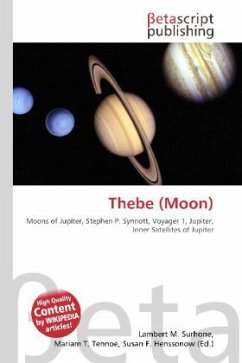Please note that the content of this book primarily consists of articles available from Wikipedia or other free sources online. Thebe also known as Jupiter XIV, is the fourth of Jupiter''s moons by distance from the planet. It was discovered by Stephen P. Synnott in images from the Voyager 1 space probe taken on March 5, 1979 while orbiting around Jupiter. In 1983 it was officially named after the mythological nymph Thebe (Greek mythology). Thebe orbits within the outer edge of the Thebe Gossamer Ring that is formed from dust ejected from its surface. Thebe is the second largest of the inner satellites of Jupiter. Thebe is irregularly shaped and reddish in colour, and is thought like Amalthea to consist of porous water ice with unknown amounts of other materials. Its surface features include large craters and high mountains some of them are comparable to the size of the moon itself. Thebe was photographed in 1979 and 1980 by the Voyager 1 and 2 spacecraft, and later, in more detail, by the Galileo orbiter in the 1990s.
Bitte wählen Sie Ihr Anliegen aus.
Rechnungen
Retourenschein anfordern
Bestellstatus
Storno








